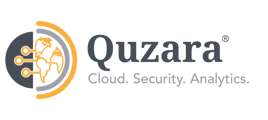Mastering Continuous Monitoring: Developing and Implementing Effective FedRAMP Strategies
The Continuous Monitoring Phase is a critical component of the Federal Risk and Authorization Management Program (FedRAMP). It ensures that cloud services used by federal agencies maintain ongoing security compliance. Developing a robust continuous monitoring strategy is essential for identifying, mitigating, and reporting security risks in real-time. This article outlines how to develop and implement an effective continuous monitoring strategy, including the necessary frequency of scans and reports.
Developing a Monitoring Strategy
Key Considerations
-
Risk Assessment:
Begin by conducting a comprehensive risk assessment to identify potential vulnerabilities and threats to the cloud service. This assessment will help prioritize monitoring activities based on the level of risk associated with different components of the system.
-
Control Selection:
Select appropriate security controls from the NIST Special Publication 800-53 (NIST SP 800-53) that align with the identified risks. Ensure that these controls are designed to monitor the system continuously and can detect and respond to security incidents promptly.
-
Automated Monitoring Tools:
Implement automated monitoring tools to ensure continuous surveillance of system activities, network traffic, and security controls. These tools should be capable of generating alerts for any anomalies or potential security incidents.
-
Roles and Responsibilities:
Define clear roles and responsibilities for the personnel involved in the continuous monitoring process. This includes assigning tasks related to monitoring, analysis, reporting, and remediation.
-
Integration with Incident Response:
Ensure that the continuous monitoring strategy is integrated with the incident response plan. This integration allows for a swift response to detected threats, minimizing the impact of security incidents.
For detailed guidelines on developing a continuous monitoring strategy, refer to the FedRAMP Continuous Monitoring Strategy Guide.
Implementing Continuous Monitoring and Reporting
Monitoring Implementation
-
System Configuration Monitoring:
Continuously monitor system configurations to detect any unauthorized changes. Configuration management tools should be in place to automatically enforce security policies and prevent drift from approved configurations.
-
Vulnerability Scanning:
Conduct regular vulnerability scans to identify potential security weaknesses. Scanning should cover all system components, including applications, databases, and network infrastructure.
-
Log Management:
Implement log management solutions to collect, analyze, and store logs from various system components. Logs should be monitored in real-time for suspicious activities, and anomalies should be investigated promptly.
-
Network Security Monitoring:
Deploy network security monitoring tools, such as intrusion detection systems (IDS) and intrusion prevention systems (IPS), to analyze network traffic and detect potential security threats.
Reporting Requirements
Effective continuous monitoring involves not only identifying and mitigating risks but also reporting on the security status of the system. FedRAMP requires different types of reports to be generated at various intervals:
-
Weekly Reports:
- Vulnerability Scan Reports: Weekly scans should be conducted to identify new vulnerabilities. Reports should include details on detected vulnerabilities, their severity, and the steps taken to mitigate them.
-
Monthly Reports:
- Configuration Management Reports: Monthly reports should provide insights into system configuration changes and any unauthorized modifications detected and rectified.
-
Quarterly Reports:
- Security Control Assessments: Conduct quarterly assessments of security controls to ensure they remain effective. Reports should document the results of these assessments, including any identified gaps and the measures taken to address them.
-
Annual Reports:
- Comprehensive System Security Review: An annual review of the entire system’s security posture should be conducted, covering all aspects of the continuous monitoring process. The report should provide a detailed analysis of the system’s security over the past year, including trends, significant incidents, and overall compliance status.
For more information on reporting requirements, refer to the FedRAMP Continuous Monitoring Performance Management Guide.
Conclusion
Developing and implementing a continuous monitoring strategy is essential for maintaining FedRAMP compliance and ensuring the ongoing security of cloud services used by federal agencies. By following best practices and adhering to the required reporting intervals, CSPs can effectively manage risks and demonstrate their commitment to protecting federal information systems.
For further guidance on continuous monitoring and reporting, visit the FedRAMP official website and explore the provided resources.
